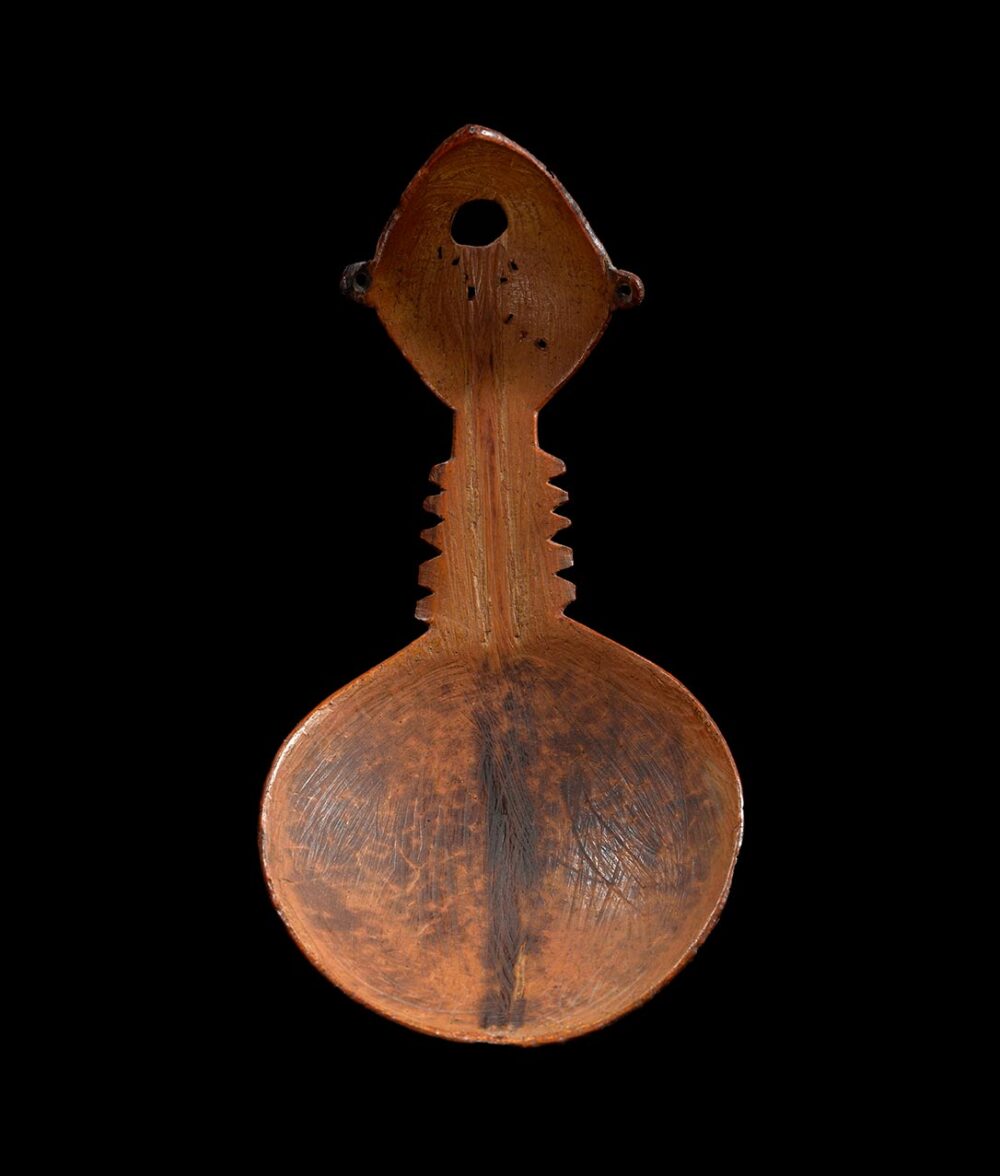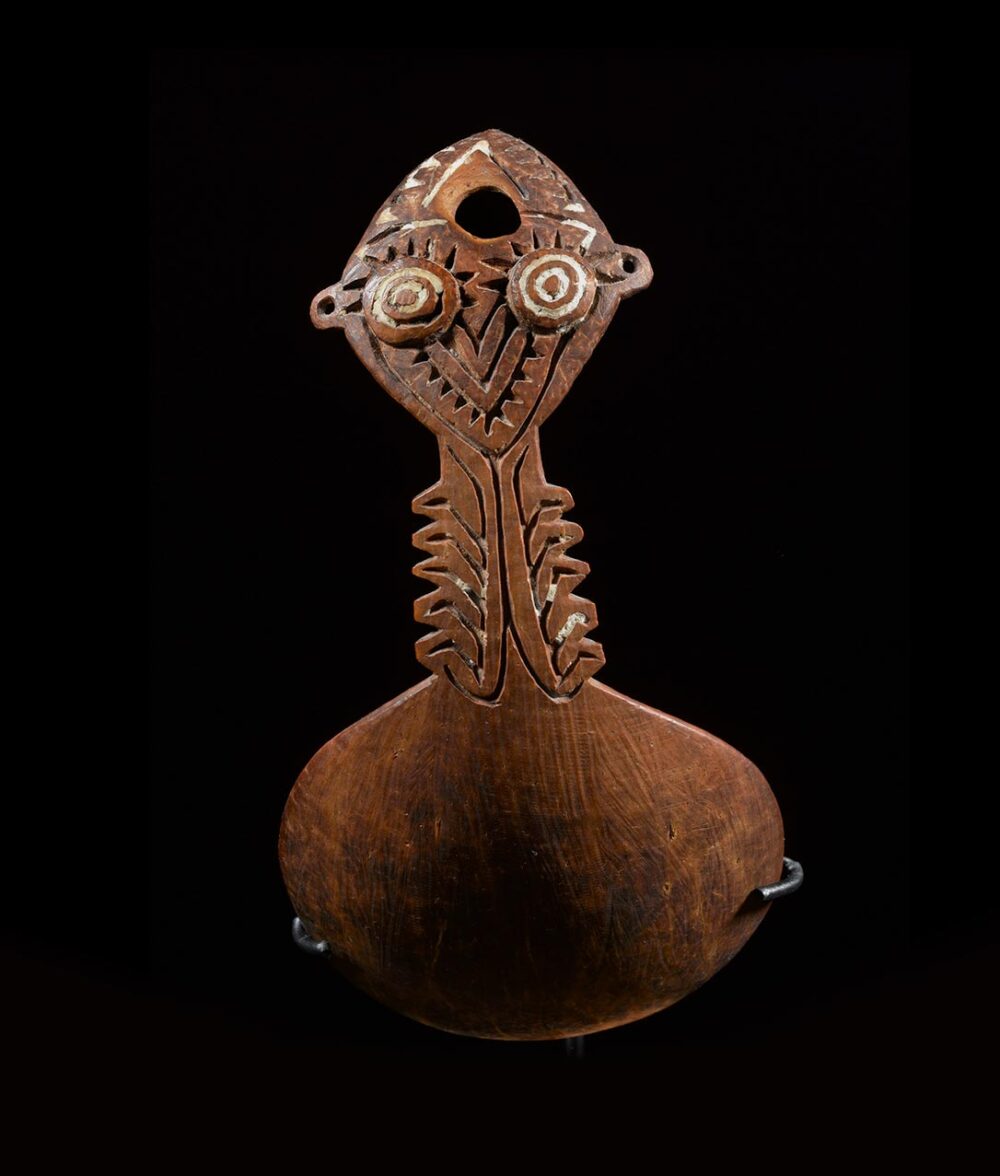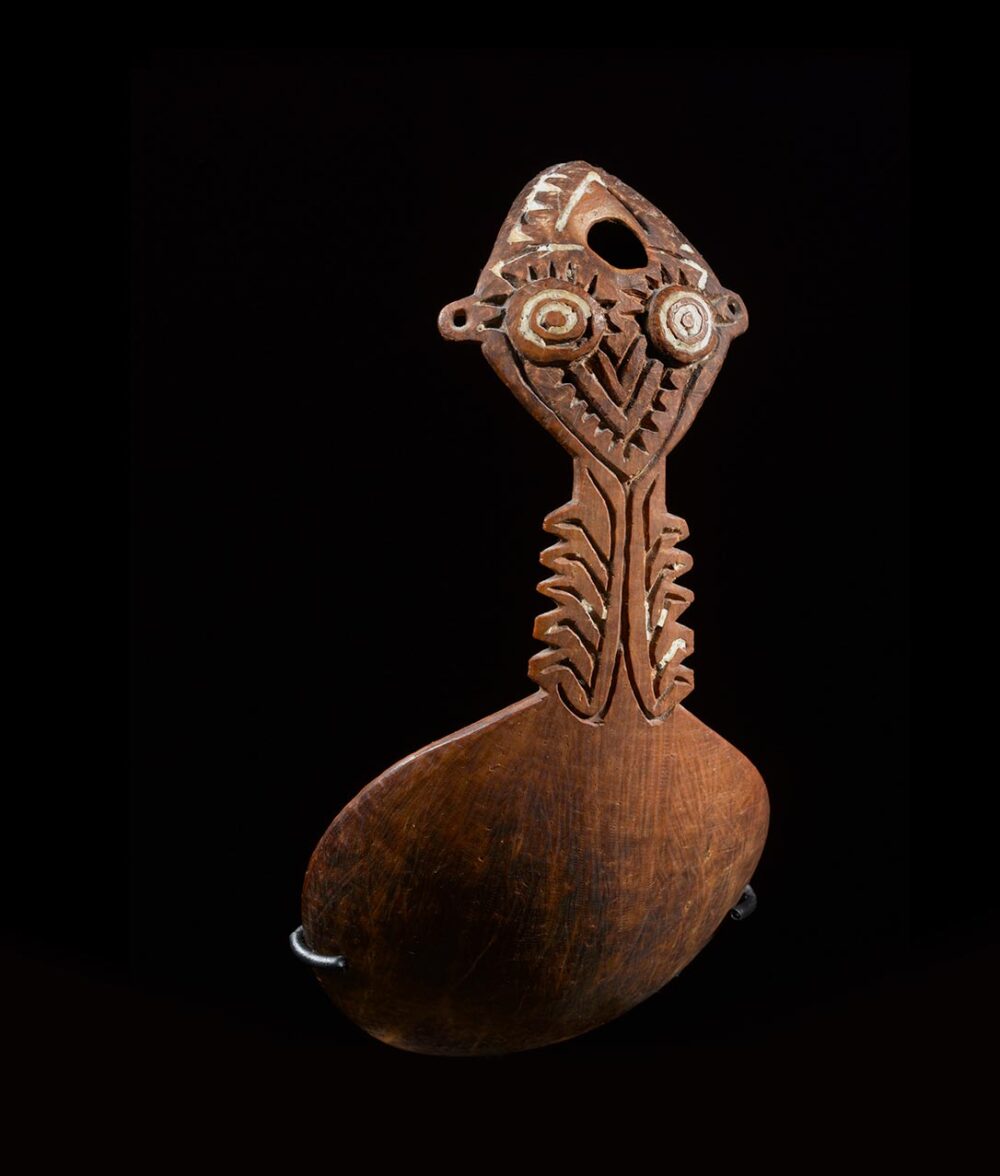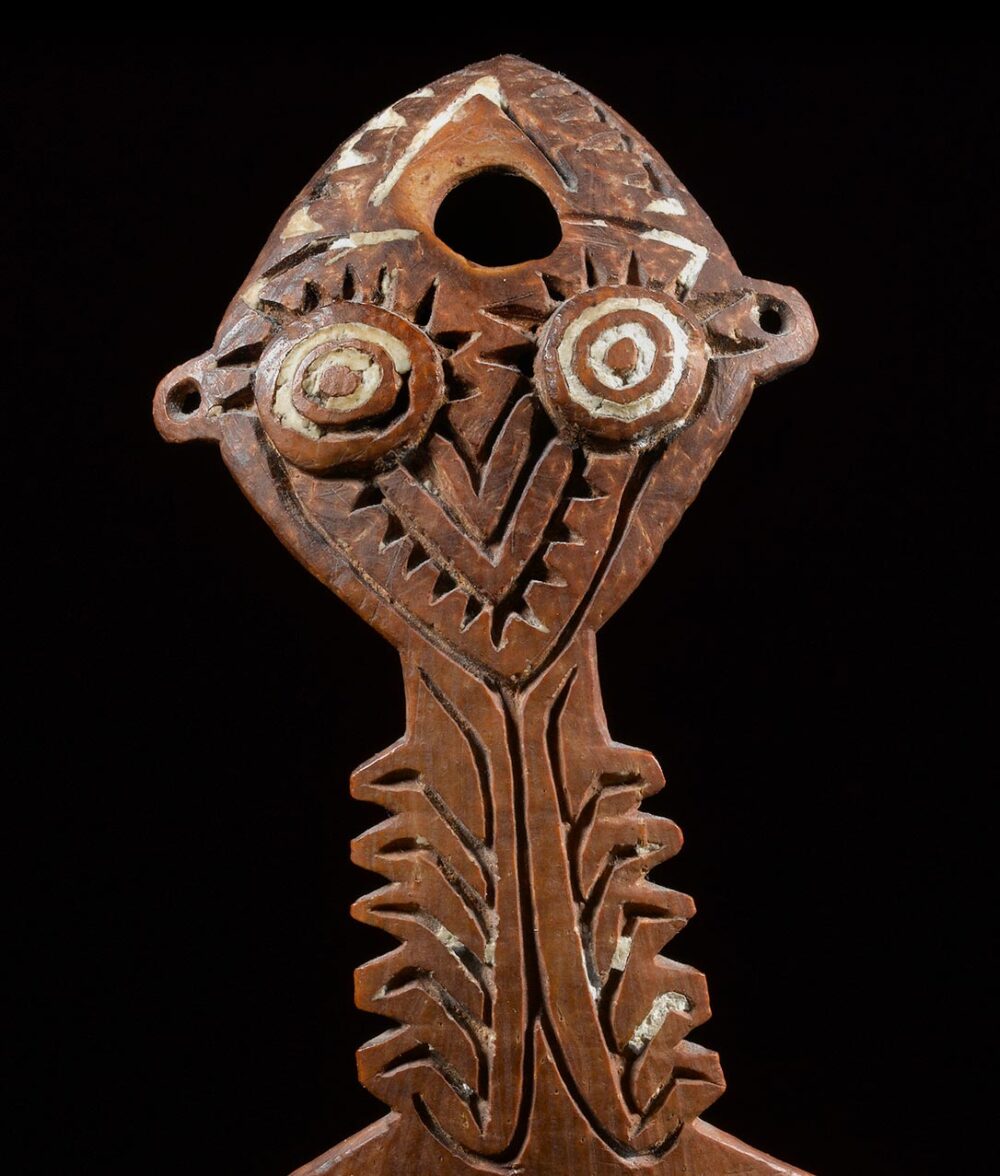Coconut Shell Spoon, arita
Elema, Papuan Gulf, Papua New Guinea. Early 20th century
Provenance: William Ohly, London.
Peter Schnell collection, Switzerland, acquired from above in 1962.
This object is a perfect example of how Papuan Gulf art can fuse both form with function. This spoon was both a utilitarian object and one of the items given to young men to use during the hevehe ritual cycle, where they chew ginger during a six-week isolation stage with strict food and sexual taboos. Young men use these special spoons exclusively to avoid possible contact with forbidden foods being consumed by people not undergoing initiation. The round open section at the top of the spoon was created so that tassels of dyed sago leaf and sprigs of ginger could be attached. This particular example was carved with a central spirit face and connected stylized torso. Most of the design is carved in low relief, except the eyes which project out in high relief. Included with this spoon is Schnell’s original inventory card, presumably created shortly after he acquired the spoon in 1962, from Ohly.
Coconut Shell Spoon, arita
Elema, Papuan Gulf, Papua New Guinea. Early 20th century
Provenance: William Ohly, London. Peter Schnell collection, Switzerland, acquired from above in 1962.
This object is a perfect example of how Papuan Gulf art can fuse both form with function. This spoon was both a utilitarian object and one of the items given to young men to use during the hevehe ritual cycle, where they chew ginger during a six-week isolation stage with strict food and sexual taboos. Young men use these special spoons exclusively to avoid possible contact with forbidden foods being consumed by people not undergoing initiation. The round open section at the top of the spoon was created so that tassels of dyed sago leaf and sprigs of ginger could be attached. This particular example was carved with a central spirit face and connected stylized torso. Most of the design is carved in low relief, except the eyes which project out in high relief. Included with this spoon is Schnell’s original inventory card, presumably created shortly after he acquired the spoon in 1962, from Ohly.








